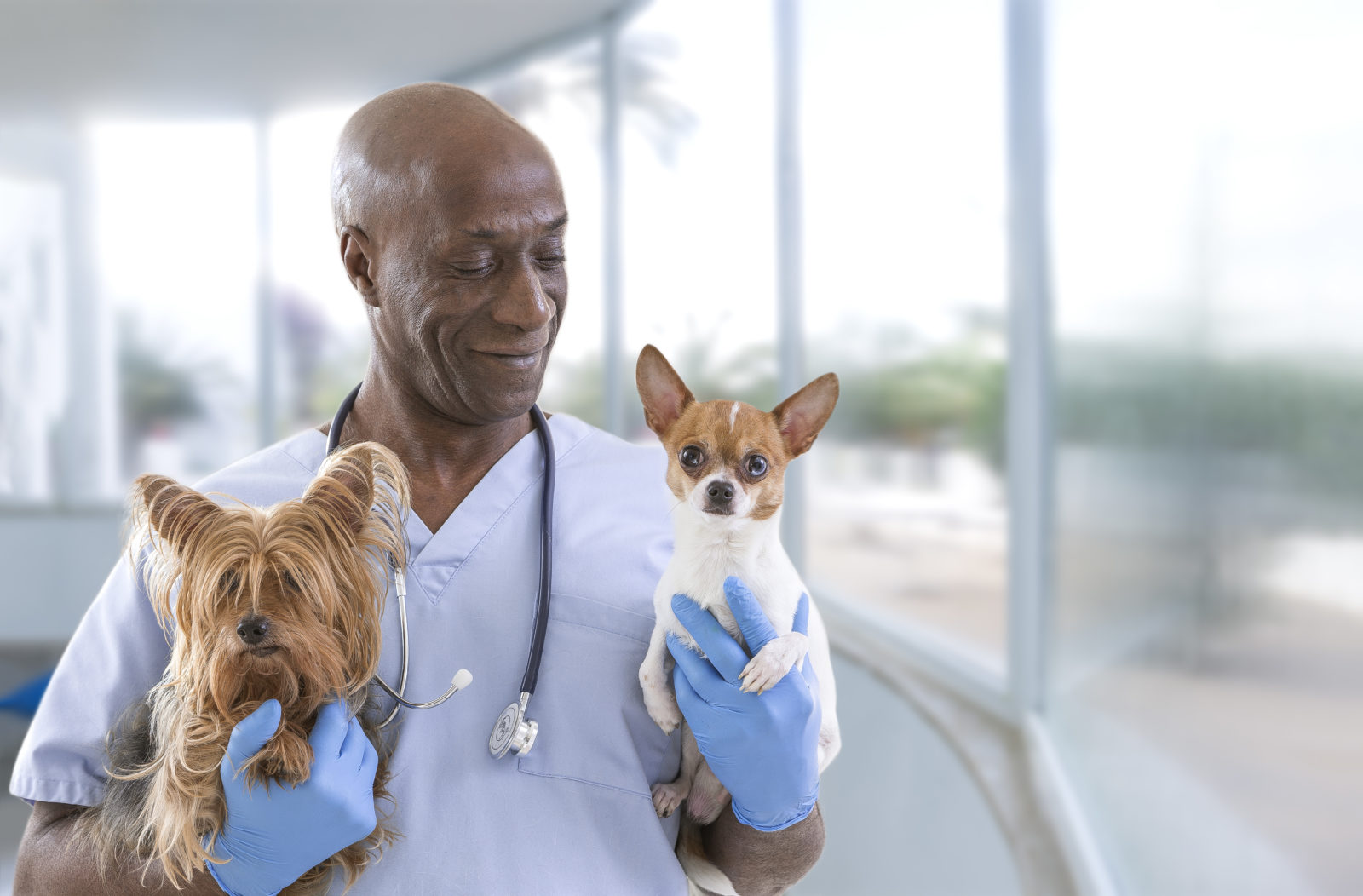According to The Strong Interest Inventory® Assessment, Veterinary Science falls into the Realistic Theme Code Category. Since its release in 1927, this assessment has been used to measure and analyze individuals’ various preferences and interests. It then applies that analysis to identify careers that they will find both rewarding and engaging. Realistic Theme Code Category careers generally involve accomplishing specific goals by using specialized tools or expertise. Those who prefer Strong Interest Inventory® Realistic Careers also typically enjoy having the opportunity to work with their hands, tinker and understand how things work, and solve defined problems. They may find abstract tasks or concepts frustrating.
Veterinarians are essentially animal doctors. They diagnose, treat, and research diseases and injuries related to a wide range of animals, including pets, service or companion animals, livestock, and zoo animals. Their responsibilities may include prescribing medication, setting bones, dressing wounds, or performing surgery. In order to make a diagnosis, Veterinarians first examine animals in their care to determine the nature of their ailments.

Read about a career as a Veterinarian including information such as a Veterinarian Salary, daily tasks and other career information.
Examinations may include a physical examination using lights and a stethoscope or may involve diagnostic equipment such as radiographic or ultrasound equipment. They may also need to collect body tissue or bodily fluids, including feces, blood and urine for analysis. Veterinarians also work closely with animal owners, for instance, they may educate owners regarding sanitary measures, feeding, general care, medical conditions or treatment options. At the end of an animal’s life, a Veterinarian may need to counsel clients about euthanasia decisions.
Other responsibilities may vary depending on a Veterinarian’s area of specialization. Like human doctors, some Veterinarians specialize in a particular type of treatment, such as dentistry, pathology, nutrition, surgery, microbiology, or internal medicine. Veterinarians involved in research may attend lectures or conferences; those with a focus on livestock may inspect sheep, poultry or other animals to detect the presence of communicable diseases; those in management may direct the overall operations of animal hospitals, clinics, or mobile services to farms; and those involved in education may give public presentations on diseases that can spread from animals to humans as well as train those who work closely with or care for animals.
Veterinarians use many different medical tools and technologies to examine their patients, including standard medical equipment (stethoscopes, forceps, scales, files, probes, needles, thermometers, etc.) as well as more specialized equipment (electrosurgery equipment, X-ray machines, surgical scalpels, etc.). They also use equipment for handling and restraining animals, such as muzzles, animal husbandry equipment, and even air rifles. Their software needs vary from standard office software (Microsoft Office Suite, web browser software, email servers) to medical data management software, such as the American Data Systems PAWS Veterinary Practice Management software.
Veterinarians need a detailed knowledge of medicine, biology, and mathematics, as well as a background in customer and personal service. Correct diagnoses are important, but they also need to be able to communicate their findings and recommendations concisely and clearly to the humans involved in their patients’ care. Veterinarians typically have a Doctorate in Veterinary Medicine (DVM).
The annual Veterinarian Salary can be as low as $34,000 in rural Arkansas to nearly $200,000 in New Jersey. Salary is often commensurate upon experience, location, and area of specialization. The national median annual income for Veterinarians is $93,830, with the 90th percentile at $162,450, or $78.10 per hour. As with many other medical professions, the highest salaries are concentrated in the mid-Atlantic (New Jersey, Maryland, Delaware), New England (Connecticut, Rhode Island, Massachusetts), and the highly populated states of Texas and California. An additional factor is agriculture – while Texas’ median income is not much higher than the national average, the highest-paid Veterinarians in Texas earn well over $200,000 annually, most likely because of the livestock industry.
Below are some employment trends for Veterinarians:
- Median Salary: $45.90 hourly, $95,460 annually
- Employment: 84,500 employees
- Projected growth (2018-2028): Much faster than average (11% or higher)
- Projected job openings (2018-2028): 5,100
Visit Our Strong Interest Inventory® Resource Page
Visit Our Myers-Briggs Type Indicator® Career Resource Database for Information on MBTI® Personality Type Careers
To Learn More About the Myers-Briggs Type Indicator, visit our About MBTI Test Page
Click on one of these to access more Realistic Theme Code Careers: Acupuncturist, Airline Pilot, Animal Trainer, Anesthesiologist Assistant, Baker, Barber, Bus Driver, Civil Engineer, Cardiovascular Technologist and Technician, Medical and Clinical Lab Technician, Computer Support Specialist, Game Warden, Forest Firefighter, Heating and Air Conditioning Mechanics, Recreational Protective Service Worker, Meat Trimmer, Molecular and Cell Biologist, Nanotechnology Engineering Technician, Oral and Maxillofacial Surgeon, Pathologist, Plumber, Radiologist, Police Patrol Officer, Surveyor, Telecommunications Engineering Specialist, Veterinary Technologist and Technician, Welder, Zoologist and Wildlife Biologist.
Explore our Strong Interest Inventory® Blog Pages:
- Strong Interest Inventory Realistic Theme Explained
- Strong Interest Inventory Artistic Theme Explained
- Strong Interest Inventory Investigative Theme Explained
- Strong Interest Inventory Social Theme Explained
- Strong Interest Inventory Enterprising Theme Explained
- Strong Interest Inventory Conventional Theme Explained
Assessment Categories
References
- Bureau of Labor Statistics wage data and 2018-2028 employment projections Onetonline.org










